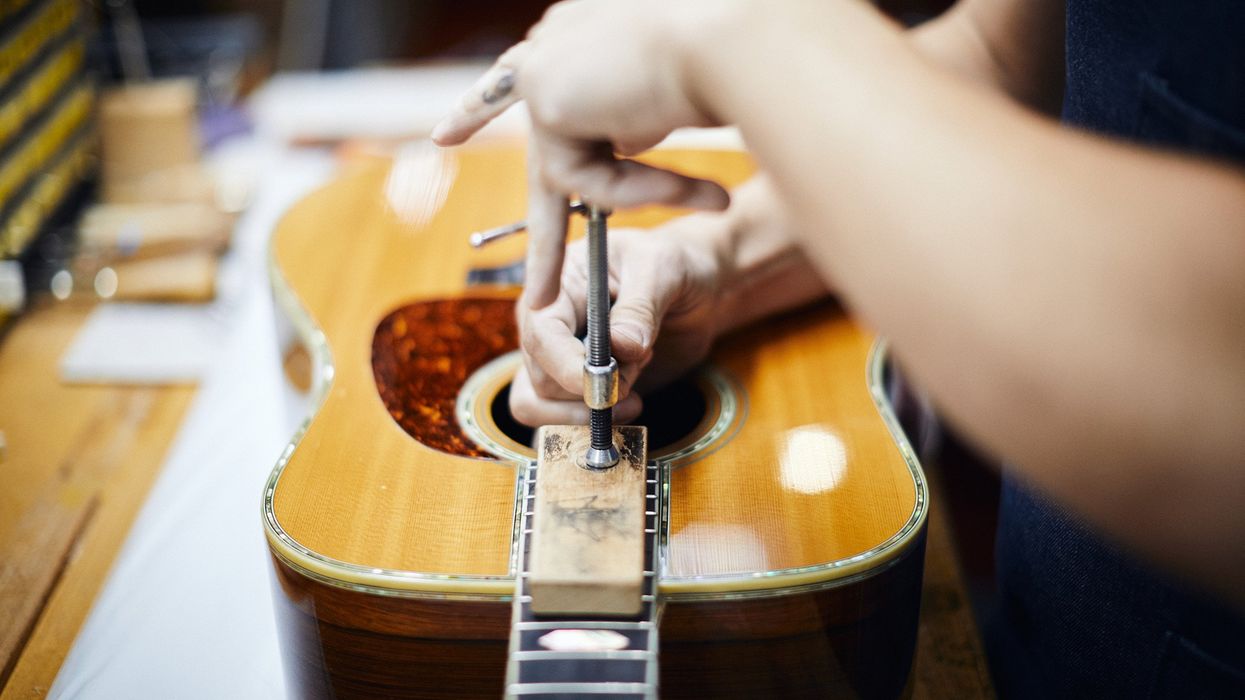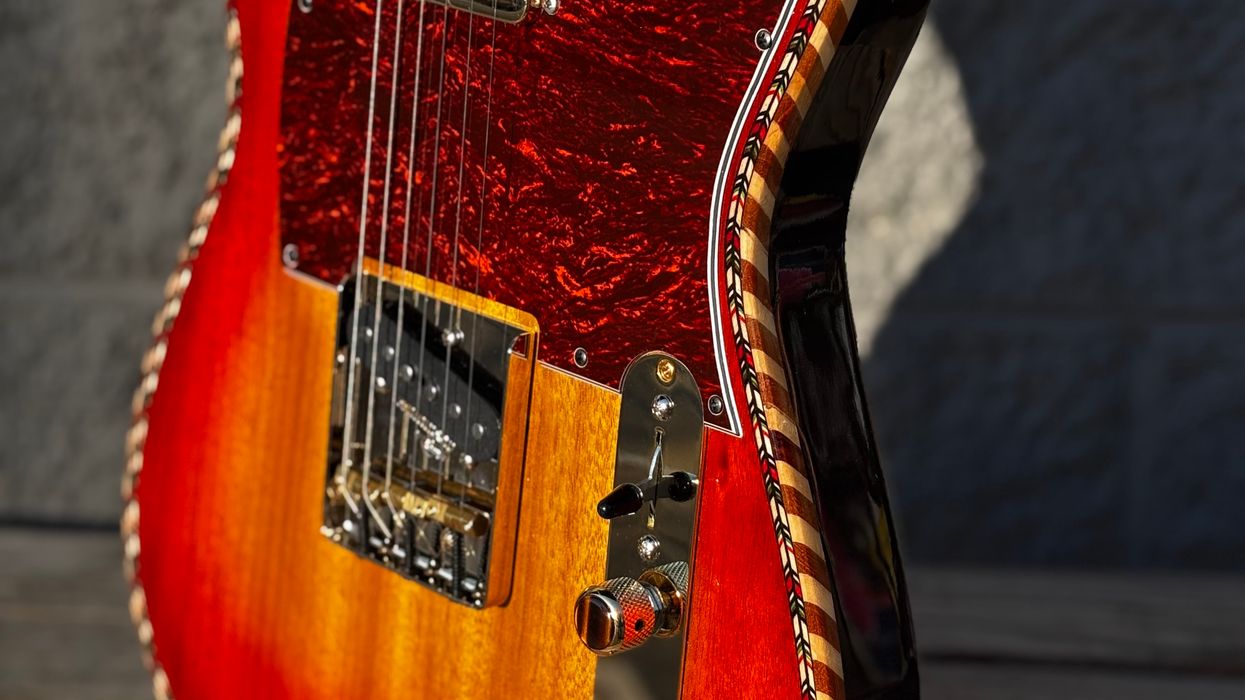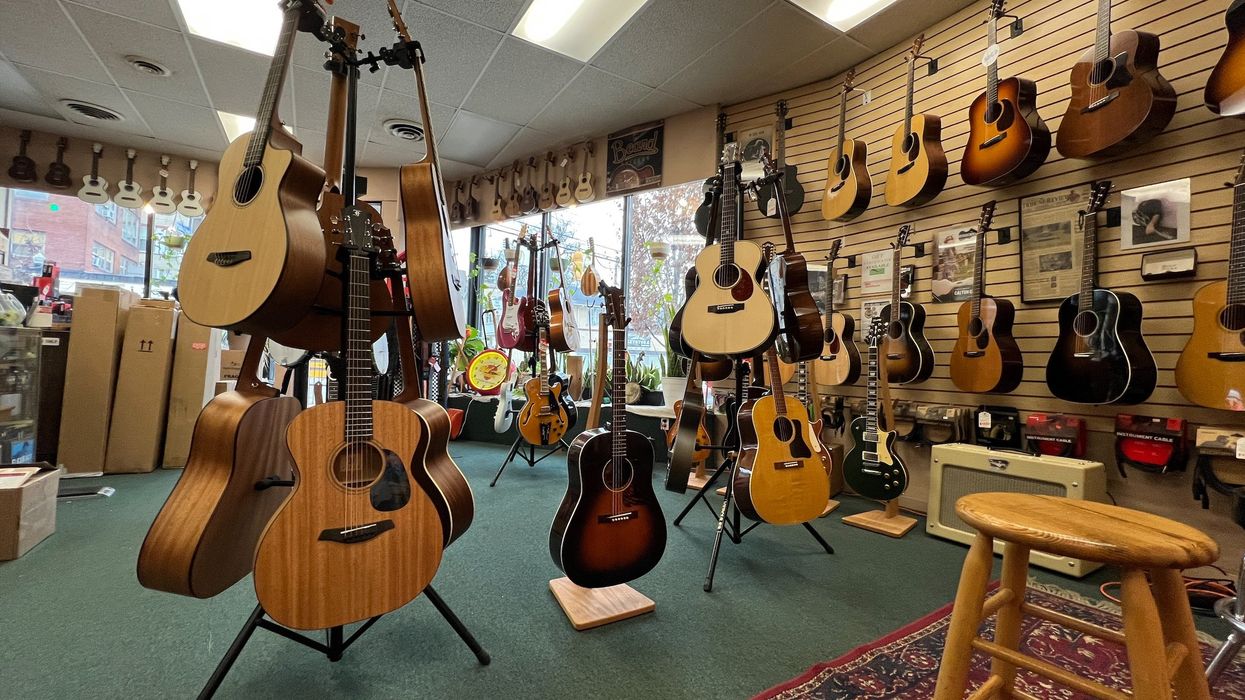For this installment of Acoustic Soundboard, I decided to recap some common but important repairs and prevention tips for your guitar. Dave Regec, Manager of Customer Repair at Martin Guitars, and the rest of Martin’s techs often need to divine the source of a guitar’s ailment before they can get to work. “Although we can hardly know the life history of every guitar, we’re still tasked with unraveling the mystery of why each guitar has encountered an issue,” he says. “It’s kind of a ‘whodunit’ mystery that my team needs to solve.” Here are Dave’s thoughts on the most common issues.
Cracks. Poor environmental conditions or accidental drops can cause cracks in a guitar. Proper care and storage are your first lines of defense against those cracks. Ensure your guitar is stored in an environment with a humidity level between 45 percent and 55 percent, and a temperature range of 72°F to 77°F. We always recommend using high-quality guitar stands that feature non-corrosive padding.
The good news is that most cracks can be repaired, from a barely visible line to a body smashed by a baggage handler. My advice is to take your guitar to a first-rate repair person as soon as a crack is noticed.
Open and Loose Bindings. If you’re a touring artist, taking your guitar on the road can expose it to all sorts of elements, which can cause bindings to separate from the body. In older and vintage guitars, glue can deteriorate over time, or binding materials can shrink. These repairs are sometimes as simple as new glue. Others require more extensive replacement of the binding. Take your instrument to a professional luthier at the first sign of separation.
Neck Resets. You’ll know your neck needs to be looked at if the playability changes and something doesn’t feel right. It may become harder to push the strings down, or the strings may buzz because the action is too low. A certified technician can determine if the neck is at the wrong pitch and whether a reset is needed, or if a simple truss rod adjustment can solve the issue.“We’re tasked with unraveling the mystery of why each guitar has encountered an issue. It’s kind of a ‘whodunit’ mystery that my team needs to solve.”
Fret Wear. We use a quality German nickel silver fret wire on all our instruments. Even so, regular use will eventually require a refret at some point in the guitar’s life. A light face-off and setup can extend the period between refrets, but eventually, you’ll reach a point where the frets are worn too low to work with.
Touch-Ups and Refinishing. We typically perform minor touch-ups and repolishing when conducting our repairs, but we always caution every owner before entering into a total refinish. Nitrocellulose lacquer is a traditional finishing material and has a wonderful way of accentuating the tone of a guitar as it ages. Refinishing can sometimes interrupt this aging cycle and impact the tone of the instrument.
Proper Humidification. We’ve received some guitars in the repair department with multiple humidifiers in the case, but none located in a position where they could actually release their humidity to the internals of the guitar. I recommend guitar hygrometers that attach to the strings over the soundhole, which will provide accurate data regarding humidity and temperature levels while your guitar is stored in its case.
Over-humidification is a real thing, too! If you refer back to the recommended humidity and temp ranges, they both have upper and lower limits. If you live in states like Nevada or Arizona, it never seems like you can find enough moisture; if you are in Mississippi, you may struggle to escape the humidity. Work on finding that sweet spot for the wood within the guidelines.
String Tension and Storage. “Storage” can be a fairly subjective term. We’ve received guitars that have been in “storage” for 20 years in someone’s attic, garage, or basement, and the outcome is seldom good. If you’re lucky enough to own several guitars, there’s nothing wrong with reducing string tension on the ones that aren’t currently in your playing rotation by tuning them down. You’re simply removing something that can influence or impact the guitar when it’s not in use.
How Often Should Instruments Be Serviced? It’s less about time, and more about mileage. Touring musicians’ instruments need more frequent checkups than weekend players. Educate yourself on guitar maintenance, and get your 6-string checked by a professional as soon as you notice an issue.
Proper care and a deep understanding of your instrument will keep your acoustic guitar in its best shape, ready to produce beautiful music for years to come.













![Rig Rundown: Russian Circles’ Mike Sullivan [2025]](https://www.premierguitar.com/media-library/youtube.jpg?id=62303631&width=1245&height=700&quality=70&coordinates=0%2C0%2C0%2C0)





